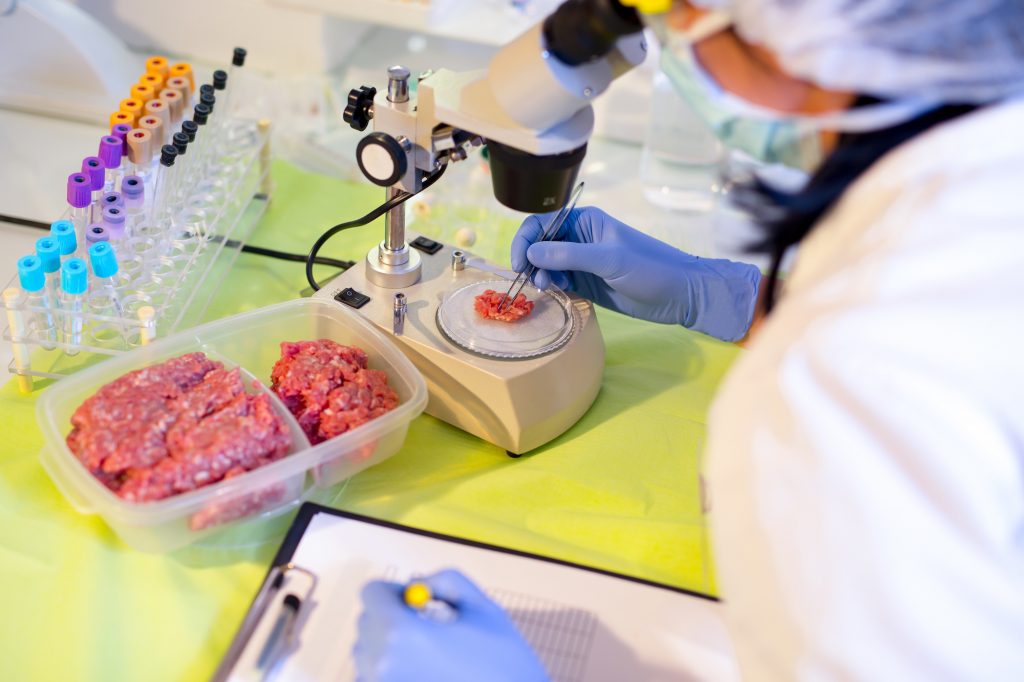With the release of the new GFSI Benchmarking Requirements, food fraud is a threat that must be addressed. GFSI-benchmarked themes, such as SQF mandate the development of a food fraud vulnerability assessment. According to Food Safety Magazine, food fraud is a global issue believed to cost between $30 billion to $40 billion each year.
According to PwC, Food Fraud refers to “the deliberate and intentional substitution, addition, tampering, or misrepresentation of food, food ingredients, or food packaging; or false or misleading statements made about a product, for economic gain.”
“beef laced with horse meat!”
Some prominent food fraud scandals have made the news recently: beef laced with horse meat in Europe, salmonella-tainted peanut butter knowingly sold in the US, melamine found in pet food and baby formula in China, adulteration of paprika, chili powders, and curries with toxic dyes manufactured in India.
Food Fraud: Quality Risks vs. Food Safety Risks
According to a 2014 report published by the US Congressional Research service, titled “Food Fraud and ‘Economically Motivated Adulteration’ of Food and Food Ingredients,” fish and seafood products represent over 30% of reported EMA reports from 1980 to date, followed by alcoholic beverages (7.9%) and meat and meat products (7.3%). When assessing vulnerabilities around food fraud, it’s important to distinguish quality risks from food safety risks. For instance, the consumption of diluted or counterfeited goods may not result in a food-borne illness. On the other hand, using toxic dyes to enhance the colour of spices is considered a public health threat that warrants a food recall.
In the US, FDA’s Final Rule for Mitigation Strategies to Protect Food Against Intentional Adulteration forces the food sector to be prepared. Knowledge of the food products and trade channels is key to understanding EMA risks. US food importers also face a heavier burden when sourcing products from countries with prior history of food fraud. In this regard, FDA has recently started issuing inspection observations (Form 483) regarding FSVP programs.
Food Fraud Vulnerability Assessments
Global food safety schemes require that a food fraud vulnerability assessment be prepared, maintained, and control measures implemented. A vulnerability assessment is a risk-based evaluation, which includes preventive controls to minimize the risk of purchasing fraudulent or adulterated materials.
In 2015, BRC released a white paper1 describing one method to conduct a food fraud vulnerability assessment using a risk matrix. This tool prompts the user to review reported EMA incidents and helps identify risk factors pertaining to ingredients, the supply chain and domestic and foreign suppliers. The evaluation also targets the use of food adulterants, their availability, known detection methods and the vulnerabilities around using them. The method advises the food industry to evaluate materials with similar food fraud risks as single groups on which the assessment can be performed.
A more recent tool is the free SSAFE2, an online resource developed by SSAFE, a non-profit organization in partnership with Pricewaterhouse Coopers (PwC)3 , Wageningen University, VU University Amsterdam and other prominent food industry stakeholders. Its goal is “to strengthen companies’ internal controls while reducing opportunities to adulterate food for economic gain.” Similarly to the BRC method, the tool guides its user to identify areas of focus to carry out initial evaluations. These areas of focus include the product line and the region or country where the food is produced. Initial assessments are designed to provide an understanding of the realities of food fraud. Items under review may include price fluctuations for commodities and ingredients, whether the supplier has an approved ethical sourcing policy and whether the supply chain is complex or global, with a large number of suppliers. Based on the outcome of the initial assessments, businesses are advised to conduct an in-depth investigation of identified risk factors.
For companies working under SQF, the new SQF food safety code edition 8.0 mandates a food fraud vulnerability assessment (Section 2.7) and control plan. Compliance starts Jan 2, 2018.
Contact Sirocco Consulting to help compliance or click here to purchase Standard Operating Procedure Templates to become compliant with SQF Code 8.0.
References:
- Understanding Food Fraud, BRC (2015)
- Meet SSAFE
- Take the food fraud vulnerability assessment





